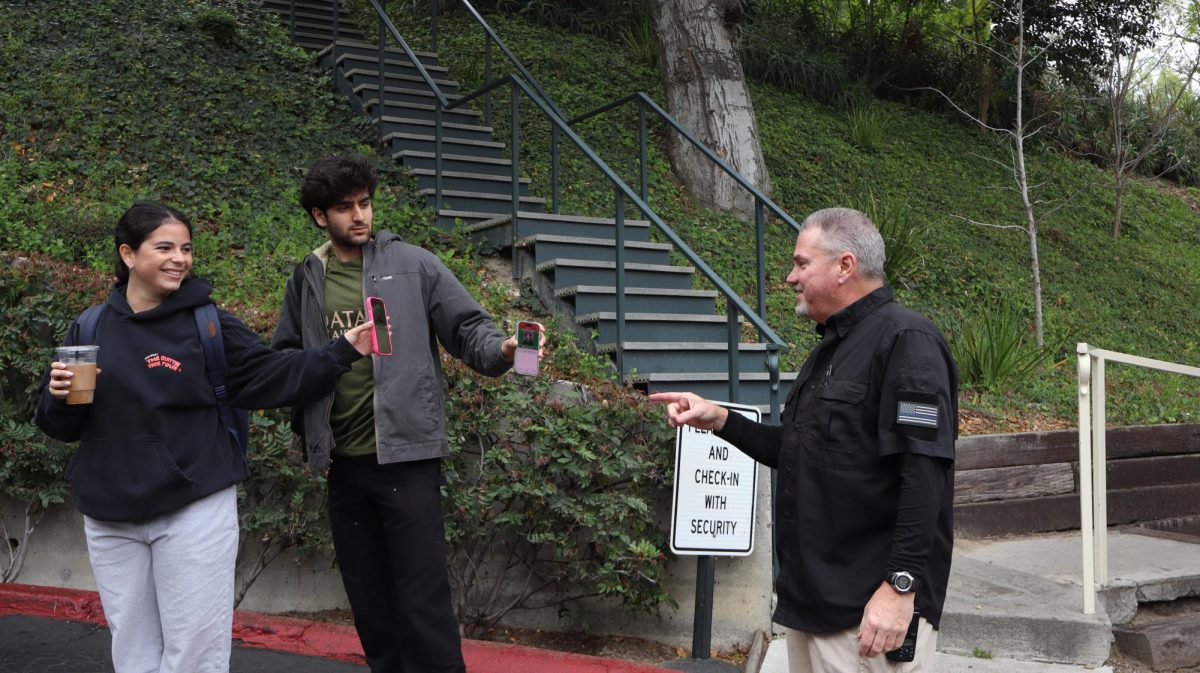By David Lim
This April, teachers unboxed their new iPads in the first step towards a one-to-one computing initiative that will push for every student to have their own computing device starting at the Middle School in 2013.
Head of School Jeanne Huybrechts emphasized the timing is right for the expansive computer program, calling the iPad “tipping point technology.”
“You need to take notice of [iPads] because they are really useful as teaching tools, whereas heavy laptops are cumbersome for students and there weren’t a critical number of textbooks available before,” Huybrechts said.
The Educational Technology Committee, led by math teacher Jeff Snapp, looked into equipping every person on campus with a computer since the start of Huybrechts’ tenure, she said.
“We almost did this with the tablet computer four years ago, and I’m glad we didn’t because the tablet computer wasn’t the right piece of technology,” Huybrechts said.
At a meeting of the middle school Faculty Academic Committee, she brought $1,800 of books and binders that the average student purchases while at the Middle School.
“If we can reduce half the weight and half the cost, it’s zero sum,” Huybrechts said, citing iPads’ potential to replace traditional teaching materials.
The implementation process has started with teachers finding uses for iPads in the classroom.
“We are discovering applications available on iPads that are incredibly well-suited for discipline-specific topics,” Director of Studies Elizabeth Resnick said, who has been planning details of the iPad rollout.
The math department has compiled useful iPad apps on a spreadsheet created by math teacher Michael Mori, Department Chair Paula Evans said.
Evans said using technology is part of a greater push by teachers to “flip their classroom,” bringing more interactive activities in class, instead of at home.
In addition to note-taking apps she uses at meetings, Evans uses an app called EduCreation to send math videos to her students and utilizes WolframAlpha to graph and solve complex equations.
Math teacher Kevin Weis shares Evans’ enthusiasm.
“I can imagine my students all holding iPads, using their fingers to manipulate a three-dimensional surface, the graph of z=sin(xy) perhaps, pinching it to zoom in on its maximums and minimums,” Weis said.
He also sees the potential for students to take quizzes on iPads and for the math department to make custom interactive textbooks.
Foreign Language Department Chair Paul Chenier calls using e-books a “no-brainer.”
“You can a get digital copy of the new AP text before the print copy and they’re a fraction of the price,” he said.
Chenier, an avid iPad user, downloaded a $6 Latin dictionary app that costs $150 in paper form.
“There are a lot of apps out there that are being designed for the classroom,” he said. “Everyone’s just thinking this is going to be big.”
Foreign language teacher Nancy Holme-Elledge said she is excited for the more flexible, individualized teaching the iPad will bring to her class. Based on her experiences implementing the language lab in 2005 and working on a upgrade for next December, Holme-Elledge is cautious.
“If [the technology] is unreliable or just a toy and doesn’t promote learning, it’s not interesting to me,” she said.
In teaching his own subject, at least, history teacher Dror Yaron has his doubts about how the iPad will enhance his classroom experience, calling interactive apps “superficial renditions of presenting information.”
“On a human level, I need to engage my students by looking them in the eye,” Yaron said. “I really feel them intellectually, and I’m concerned that the technology will get in the way.”
History teacher Francine Werner, who previously did not allow computers in her class, shares Yaron’s concern that the technology may hamper students from learning how to filter what to write down their notes when they can type every word a teacher says.
“But if this is the way of the future, we’re going to have to find a way [to teach notetaking], maybe through trial and error,” Werner said.
But Werner isn’t concerned with the devices’ potential for distraction.
“I know people doodle even without using computers,” she said. “There’s some very fine artwork that goes on in the middle of the most brilliant lectures.”






























